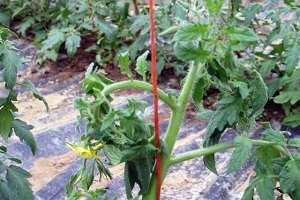Growers looking to high efficiency vent-free heaters for their greenhouse operation may be disappointed in their performance when growing ethylene sensitive crops like tomatoes.

Recently, a Pennsylvania grower sold on the high efficiency rating of a vent-free unit purchased and installed one in his tomato greenhouse. For those unfamiliar with these units they utilize a motorized fresh air inlet that transports fresh outside air into the unit to aid in the combustion of the propane or natural gas fuel.
The grower thought that the vent-free heater sounded great since it would combine 90% fuel efficiency with the added benefit of injecting growth enhancing CO2 into the greenhouse environment. While this specific unit looked good on paper the real impact of this purchase would be seen months later when cropping problems would be observed.
Traditional unit heaters are vented to the outside to allow for the transport of flue gases and water vapor to the outdoor environment. Flue gases can contain air pollutants like sulfur dioxide and ethylene. If these flue gases enter the growing space, they can result in flower and leaf abscission, epinasty (the downward bending of stems), foliar burn, and yield loss. Vented heaters tend to be less efficient than the vent-free heaters because some of the heat generated through combustion is also conducted up the vent-pipe and is lost to the outdoor environment.

Vent-free heaters are designed to minimize the byproducts from combustion while limiting heat loss to the outside environment. Vent-free heaters also produce water vapor which may increase the relative humidity in the greenhouse structure. Increases in relative humidity in the greenhouse environment may encourage condensation to form on the interior of the greenhouse film which could reduce light transmission to the growing crops. Reductions in light transmission may impact crop quality while elevated greenhouse humidity levels could increase the risk of foliar infection from diseases like leaf mold and pollination related fruiting issues.
Conclusion
Ethylene is a colorless, odorless gas that can injure some plants at very low levels (.05 to .01 ppm). As the level of ethylene increases in the greenhouse atmosphere the observable severity of plant injury increases. The installation of an old school distribution tube (fan jet system) in the greenhouse will dilute the flue gases while mixing the air inside the structure. This practice should lessen the risk of plant injury in greenhouses where vent-free heating technologies have been employed.